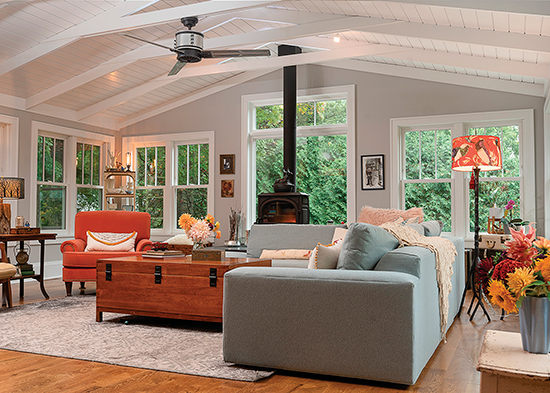(Family Features) Although preparing your home for winter is a fairly consistent process year-to-year, many homes have seen significantly more use this year due to COVID-19 restrictions. If your home will serve as your office or school throughout the winter months, it’s important to address issues that may have been noticed but tolerable during winters past.
Consider these tips from the experts at the National Association of the Remodeling Industry to help ensure your home is ready before winter weather strikes.

Improve Indoor Air Quality
Beyond proper physical and structural considerations of winter preparations, the increased daily usage of your home naturally increases the importance of indoor air quality. Since windows and doors will likely be closed more often, moisture levels within your home can be significantly affected. Use a humidifier, if necessary, to maintain a relative humidity between 45-50%, which is healthier and can feel more comfortable. It can also keep wooden doors and windows functioning properly and wood furniture and floors looking good.
Get Your Furnace Checked
To keep your furnace from failing when you need it most, get it inspected by a professional before you need to rely on it to heat your home in the dead of winter. If you’re not leaving the house and turning down the thermostat each day, this will be especially important this year. Regular tune-ups can prolong your furnace’s life, help prevent carbon monoxide leaks and ensure your unit is working at maximum efficiency. If a whole-house humidifier is included as part of the heating system, also inspect the humidifier and replace the element, if necessary.
Seal Leaks Around Windows and Doors
Air infiltration is one of the largest culprits of reductions in a home’s efficiency. Small air leaks can add up to significant heat loss and a corresponding increase in energy consumption. If replacing window screens with storm windows and installing a storm door on your house isn’t realistic, increase energy efficiency by sealing gaps around window and door moldings with caulk to help keep heat from escaping. If any pipes or ducts travel through an exterior wall of your home, you can also use caulking and weather-stripping to help block potential entry points for cold air.
Check Your Gutters
Improper drainage away from the home is one of the biggest causes of water leaking into basements and crawlspaces. Gutters and downspouts have the single purpose of routing water away from your home to help prevent damage to your foundation. Once leaves have fallen and before the first snow, ensure your gutters are properly secured and clear of debris. Clogged gutters can lead to improper drainage and potential overflow, ice damming or other water-related issues. Also adjust downspouts so they direct water at least 5 feet from the house to help minimize the possibility of water run-off back toward the foundation.
Prep the Plumbing
When water freezes, it expands. Any residual water in pipes that is exposed to freezing temperatures, including interior lines located in exterior walls or unheated areas, can burst. Start by disconnecting hoses and shutting off exterior faucets, draining any water that remains in them and storing hoses indoors to prevent cracks. Drain any other pipes, valves or in-ground sprinklers that may be exposed to the elements and, for an extra layer of protection, wrap water spigots with covers to prevent damage. Sometimes a simple trick like keeping a cabinet door cracked open to allow warm air into the space can prevent frozen pipes.
Find more expert tips to get your home ready for winter at RemodelingDoneRight.com.







